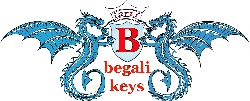Hamvention 2019 - Begali's Web site




Hamvention 2019
Achievement

Following his mechanical studies and the experience gained at the precision mechanics workshop with his father Guido Begali and later with other well-known personalities in the history of Italian mechanics, he began his work experience in his workshop in Brescia in 1954. Passionate about his work and dedicated to his family, given the market of knitting machines for which he has always produced details of precision went into recession, he dedicated his amateur radio activity and his experience, in order to save his company and so to be able to continue his work experience in the field of mechanics thus producing Telegraphic Keys. Always ready to challenge the fate and adversities of life and work, he has always put his heart and his experience at the service of those who requested his intervention. Always passionate about reading (with about 10,000 pieces in his library), for most of Radio technique, mechanics and science, he wrote his book “History and Stories of Radio” in 2005, including not only history of radio and definitions of radio technology but also personal experience of work and personal life. The most remote of Piero’s memories goes back to 1943 when he listened to the home receiver (a Philips 538) and heard a dramatic speech: “Italians, I want to be once again sincere, displaced, displaced, displaced”.
Not knowing the meaning of “displaced persons” (move to the countryside to avoid the risk of bombing cities) forced to go out to ask his father who was cultivating the war vegetable garden, he was thus able to fix that listening in his memory. Passionate about electricity, he built a first Radio in Galena, which was followed by regenerative Receivers. Failures have never failed his passion. He believed, in 1957, that he had listened to the first Sputnik with a signal jet receiver. A more concrete experience matured, doubts arose, who knows! The workshop lessons (Workshop yes, but there was talk of radio) given by Professor Renato Luisa, then i1RD, of electromechanical engineer Giuseppe Masserdotti, then i1GME, allowed him to cultivate the best interest in radio communications. After obtaining the transmission license in 1964, he dedicated himself, in the early days, to the hunt for new countries, then realizing that the main purpose of the ham radio is not the competitive activity. Rather the experimentation of equipment, antennas and radio wave propagation phenomena, not neglecting the dissemination through collaboration with magazines. As a result of a decline in industrial production that he had been carrying out since 1954, he converted his workshop back to the production of telegraphic keys.
